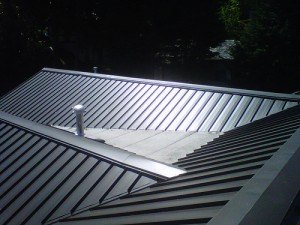Fighting Scorching Arizona Phoenix Weather with Cool Roofs
Temperatures in cities like Phoenix, Arizona are significantly higher than those in surrounding rural areas. This phenomenon is called urban heat island effect. A city that is warmer than its neighboring rural areas is called an urban heat island (UHI).
The UHI effect experienced due to Arizona Phoenix weather is felt more at night than during the day and during winter and summer. On average the temperature difference between urban and rural areas during the afternoon is around 7 degrees Fahrenheit. In certain areas the difference could reach up to 10 degrees Fahrenheit.
The primary cause of this peculiar condition is human activities, particularly the modifications of land surfaces in cities.
Causes of UHI Effect
Studies identified at least three important factors that contribute to the UHI effect. These are:
- Reduced area of vegetation in urban cities compared to rural areas. Fifty six percent of UHI effect is attributed to this factor.
- Dark paving or land surface, which accounts for a six percent difference in temperatures.
- Dark roofing used on buildings, which accounts for a significant thirty eight percent of UHI effect.
Solutions for UHI Effects
- A logical solution under the first scenario is to increase vegetation in cities to reduce temperature. However, this method is considered a long-term solution because it will take years, even decades, to enjoy the full benefits of planting trees and improving vegetation in a rural land. Notably, the solution will always be in a catch-up mode because human progress and expansion always lead to fewer vegetation.
- The second problem could be remedied by installing lighter-colored pavements on city streets. The technology to implement this solution already exists today. Unfortunately, it will require substantial capital expenditures and the resulting improvement in temperature is negligible. This method is not cost-effective and also considered a long-term solution.
- The third cause of UHI effect has the best solution relative to the other two. Installing reflective and cool roofing on buildings offers the biggest benefit in terms of money spent and period of effectiveness. Compared to the other two solutions, using cool roofs to offset warming is easy to accomplish, relatively inexpensive, and its benefits can be immediately attained.
Cool Roofs to the Rescue
Cool roofs use reflective surface to direct the heat of sunlight away from the structure. A light-colored and reflective surface absorbs less heat from the sun unlike a dark, non-reflective roof. Because of the enormous benefits derived from using cool roofs such as reduction of heat in the building and savings on energy bills, more homeowners are using this type of roofing over conventional roofs.
